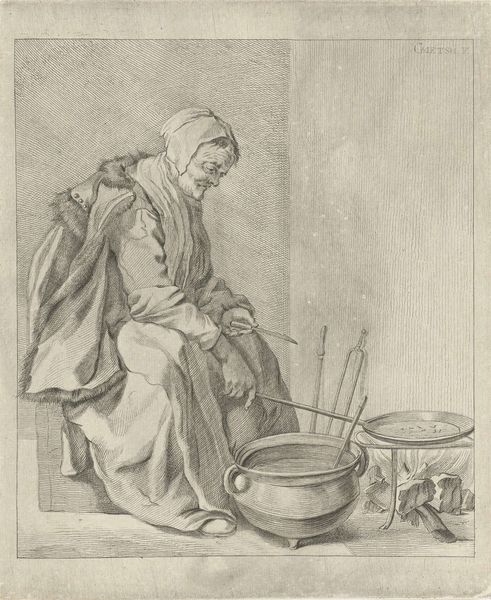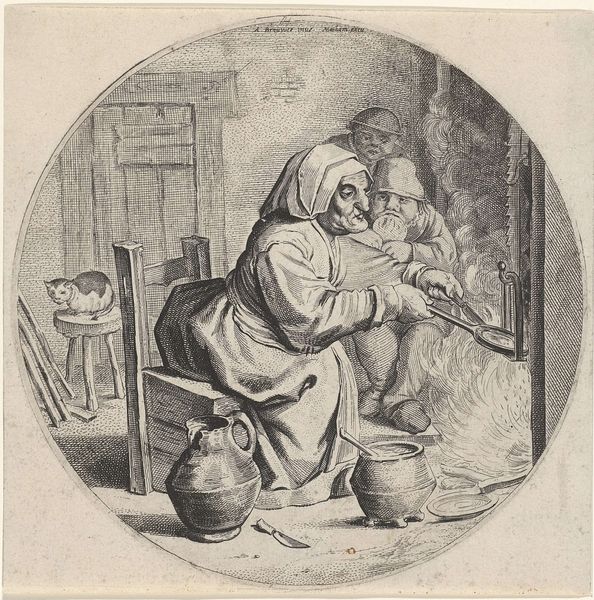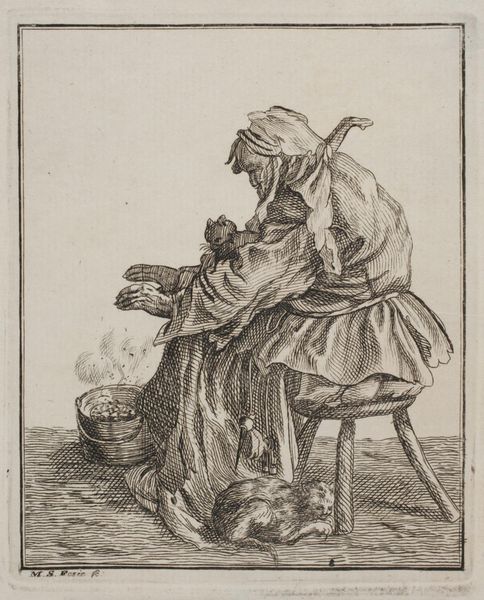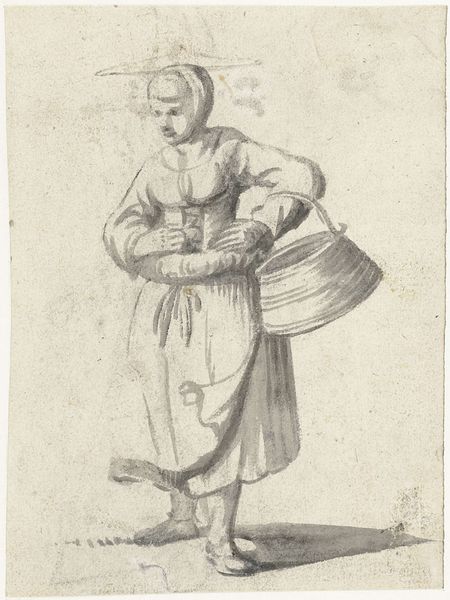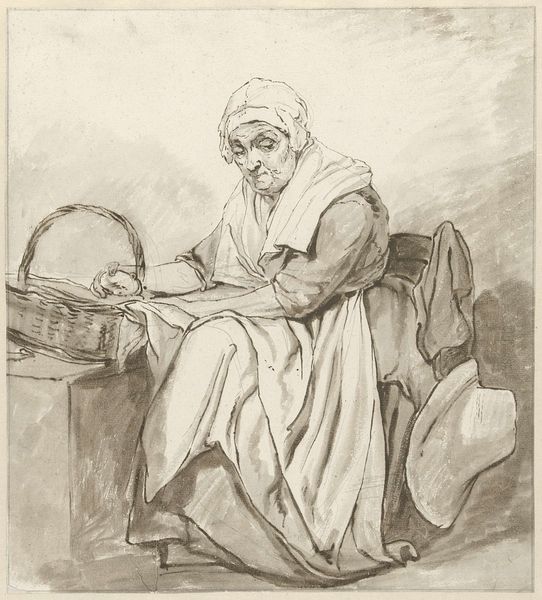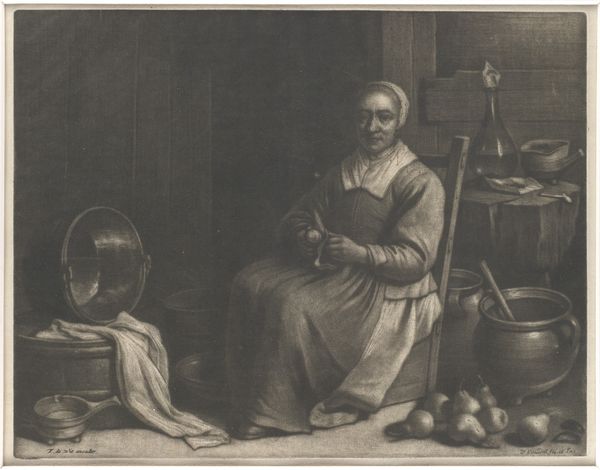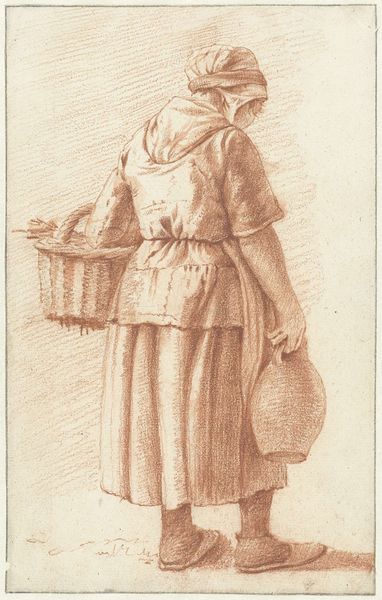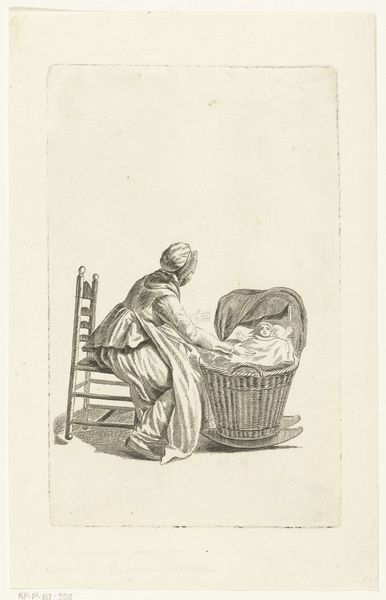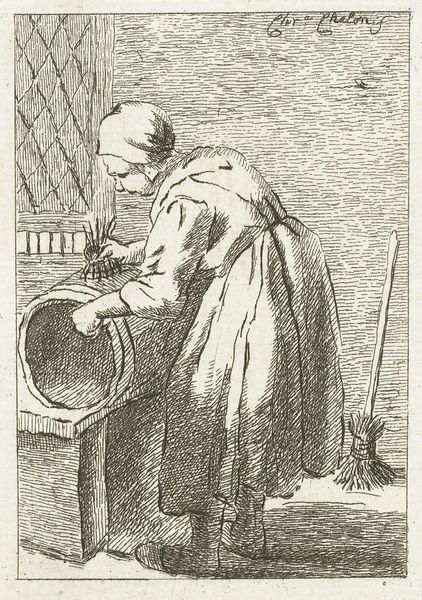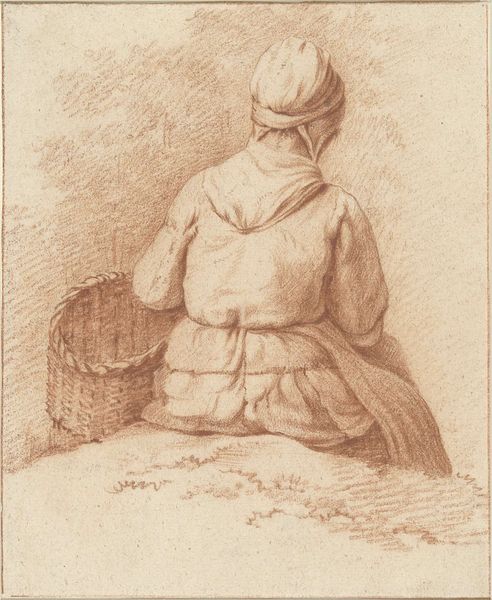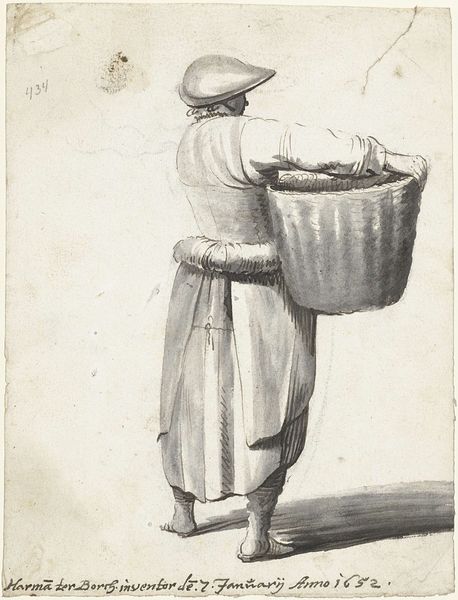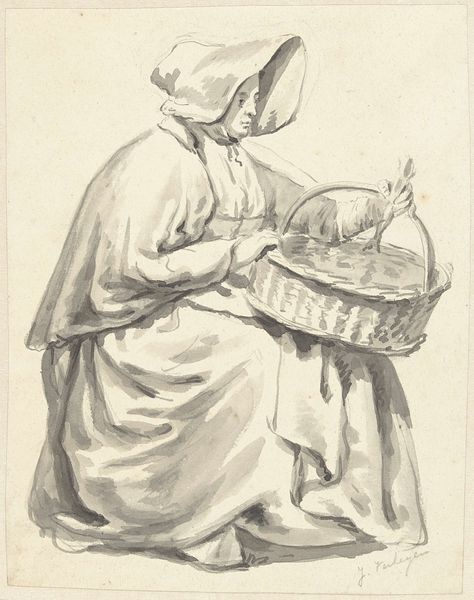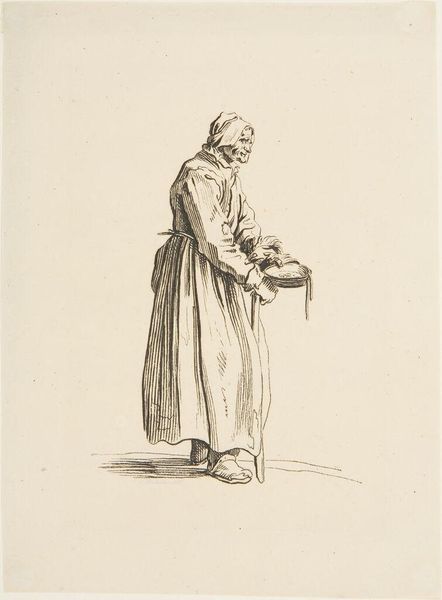
Dimensions: height 243 mm, width 200 mm
Copyright: Rijks Museum: Open Domain
Curator: Welcome. Before us, we have Pieter de Mare’s engraving, "Koekenbakster," likely created between 1768 and 1796. Editor: It has a melancholic air to it. The aging woman's posture, the low horizon line, and the muted palette evoke a sense of solitude. What can you tell me about the materiality? Curator: This print provides a glimpse into the world of artisan labor. We see the tools of her trade: pots, pans, implements for cooking over an open fire. De Mare captures the physical realities of a cook’s work, possibly rendering it more romantic in doing so. Consider also the socio-economic context—this wasn't "high art" subject matter, but a recording of daily existence. Editor: Absolutely. And beyond just recording, there’s symbolism in this domestic scene. The fire represents transformation, warmth, but also the fleeting nature of life itself, feeding into the figure’s pensive attitude. She is working, making food for nourishment, she's essential, a link to family and social ties. Curator: Precisely. The etching, made via engraving, reveals much. Here's an artisan memorializing another. Look closely, and we appreciate the engraver's labour and skill, as they reproduced the material reality of Koekenbakster’s. This process mirrors her own. There's a social connection. Editor: What strikes me are the circular forms—the pots, her face within the bonnet—suggesting repetition, a cyclical existence. The scene seems suspended in time, almost iconic in how it presents the idea of simple life. It highlights a theme: labor with dignity. Curator: I agree; labor *and* dignity—two concepts sometimes presented as opposites in this era. De Mare's selection of a genre painting also carries symbolic weight. What we eat, how it is made and by whom are all core parts of society's underpinnings. Editor: Well said. By diving into materials and symbols, we've uncovered more layers than I initially saw. It offers a compelling look into not only past processes but our enduring relationship with them.
Comments
No comments
Be the first to comment and join the conversation on the ultimate creative platform.
